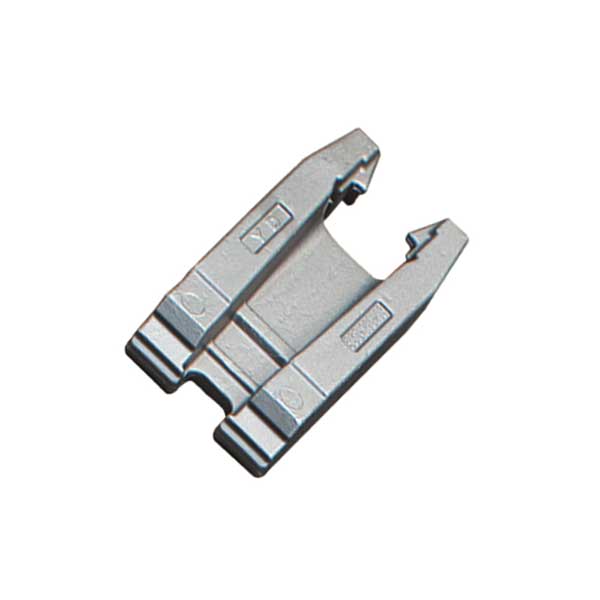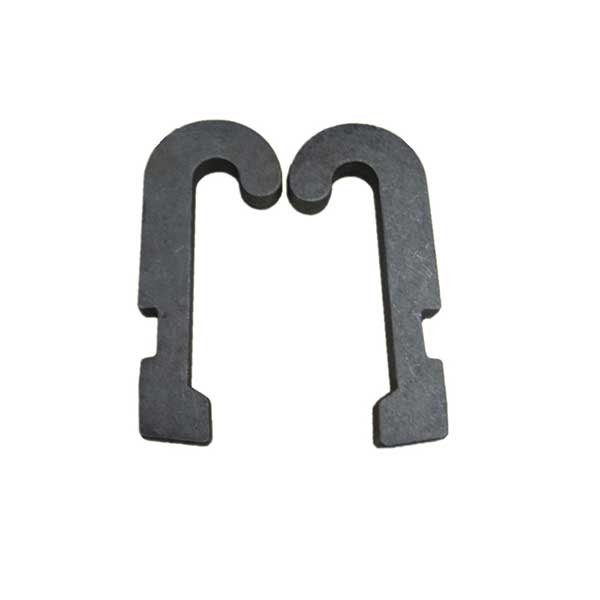Closed die forging precision forming method for locking frame forging
After the equal-thickness slab is preformed into a slab of variable thickness, the slab of the variable thickness is forged into a forged frame forging, and the following steps are sequentially performed:
1) determining the shape and size of the variable thickness slab according to the shape and size of the locking frame forging to be formed;
2) obtaining a slab of equal thickness equal to the volume of the slab of the variable thickness slab and having the same plan view area;
3) designing a mold for pre-forming a variable-thickness slab according to the shape and size of the slab of variable thickness, and pre-forming the slab of equal thickness to obtain a slab of variable thickness;
4) accurately forming the variable thickness slab by closed die forging to obtain a locking frame forging; wherein the step of determining the shape size of the variable thickness slab is:
i) drawing a three-dimensional shape drawing of the frame forging according to the size of the forged frame forging;
Ii) drawing a plan view of the long and wide faces of the lock frame forging; the long and wide faces being a face composed of length and width;
Iii) dividing the lock frame forging into a combination of several units in a plan view, numbering the units; the smallest area closed body surrounded by the center line of the intermediate ribs or the center line of the intermediate ribs and the outer contour of the forging The smallest area enclosed by the line;
Iv) separately calculate the plan area of each unit in the plan; calculate the volume of each unit separately; according to the formula: calculate the ideal thickness of each unit separately;
v) simplifying the plan view area and the ideal thickness of each unit of the variable thickness slab to obtain the plan view area and thickness of each new unit of the variable thickness slab; the simplification processing merges adjacent units having a thickness difference of less than 1 mm into a new unit, and renumbering the uncombined unit and the merged new unit; calculating the plan area of each new unit and the volume of the new unit separately; calculating the ideal thickness of each new unit according to the formula; The volume is the sum of the volumes of the merged units, and the plan area of the new unit is the sum of the planar areas of the merged units; the volume and plan area of each uncombined unit are the same as before the correction; the ideal thickness is rounded off to obtain each new The thickness of the unit;
Vi) correcting the steps formed at the different thickness junctions after the simplification of the treatment by using a transitional slope: subtracting the high-order position of the step generated between adjacent new units by a volume of a right-angled triangle having a cross-section of 30 degrees, The volume of the right-angled triangle of the 30-degree angle is increased to the lower-order position of the step generated between adjacent new units; the high-order and low-order are connected by the inclined plane.







